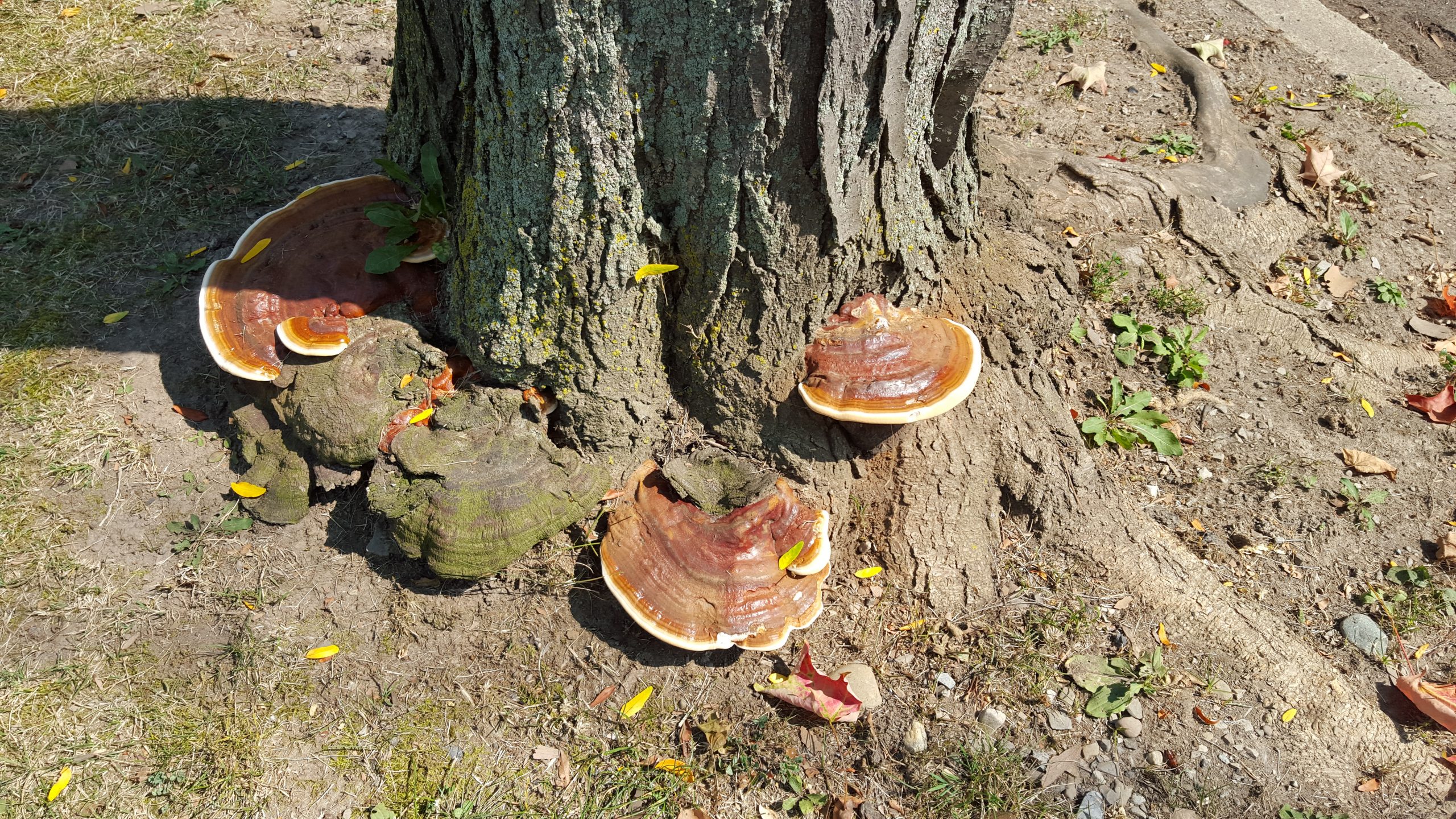Ganoderma Mushrooms: What Are They?
Mushrooms are fascinating organisms, and one particular type, known as Ganoderma, has captured the attention of both traditional Asian medicine and tree enthusiasts. Ganoderma mushrooms belong to the Ganoderma genus, a group of fungi characterized by their unique appearance. These mushrooms are commonly referred to as reishi mushrooms, lingzhi mushrooms, or even the intriguing “mushroom of immortality.” While they hold significant medicinal value in ancient cultures, it’s important to be aware that these mushrooms can also pose a threat to trees.

Getting to Know Ganoderma Mushrooms
Ganoderma mushrooms stand out due to their distinct features. They are sizeable, woody mushrooms with a glossy reddish-brown cap on top and a pale white underside. These fungi have a preference for decaying or dead heartwood, which is the central, non-living part of trees. You’ll often find them on trees that have been wounded or are under stress. The white mottled rot they cause is typically observed in the larger roots and the base of trees. Recognizing the early signs of infection is crucial. Look for leaves turning yellow or wilting, unusually small leaves, a lack of new leaf growth, or even dead branches. Another unmistakable indication is the appearance of semicircular fruiting bodies resembling small shelves or mushrooms on the lower part of the tree trunk. These structures are called conks, which are essentially mushrooms without stalks.
The Silent Threat: Ganoderma Infection
Once a conk forms, it signifies the presence of a wood-decaying infection. This infection originates from wounds or decaying areas and gradually spreads throughout the tree. It typically starts in the roots and moves up the trunk, ultimately jeopardizing the tree’s structural strength. By the time the conk is visible on the bark, the fungus has likely been active for a significant period. The fungus further disseminates through the release of spores from the conk, carried by air and water. The speed at which this fungus advances is remarkable; in less than a year, it can destabilize and weaken trees and palms that have fallen victim to infection.
Safeguarding Your Trees: Prevention and Action
The best defense against Ganoderma infection is prevention. This involves maintaining proper watering practices, considering the use of soil care products, and being cautious not to harm or stress the trees. Unfortunately, the use of fungicides has proven ineffective against this type of fungus. Therefore, it’s essential to monitor your trees closely. If you suspect a tree is infected, swift action is critical to halt the spread. In some cases, the most effective approach is to remove the infected tree along with its entire root system. This may even involve removing the surrounding soil.
If you notice any conk-like growths or encounter symptoms as mentioned earlier, seeking guidance from an ISA Certified Arborist is highly recommended. These professionals have the expertise to assess the situation accurately and provide appropriate recommendations. Ganoderma mushrooms might offer medicinal wonders and intrigue, but understanding their potential impact on trees is crucial for maintaining the health and longevity of your beloved green companions.





